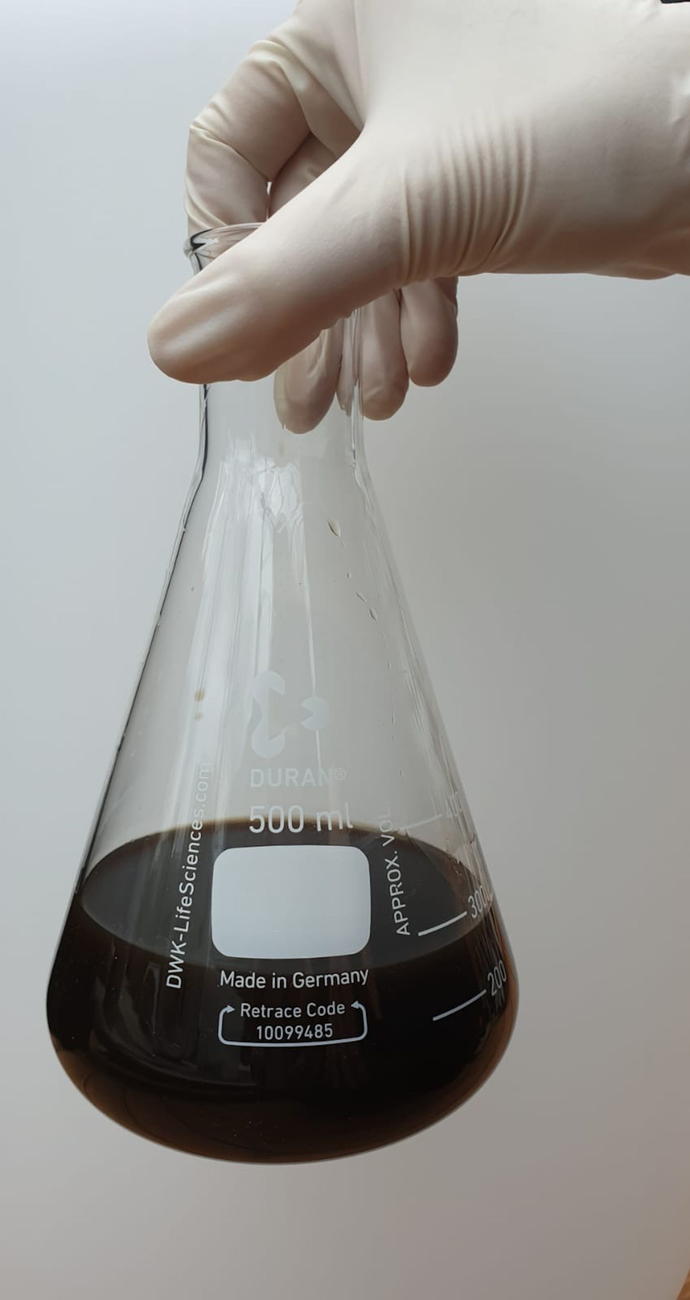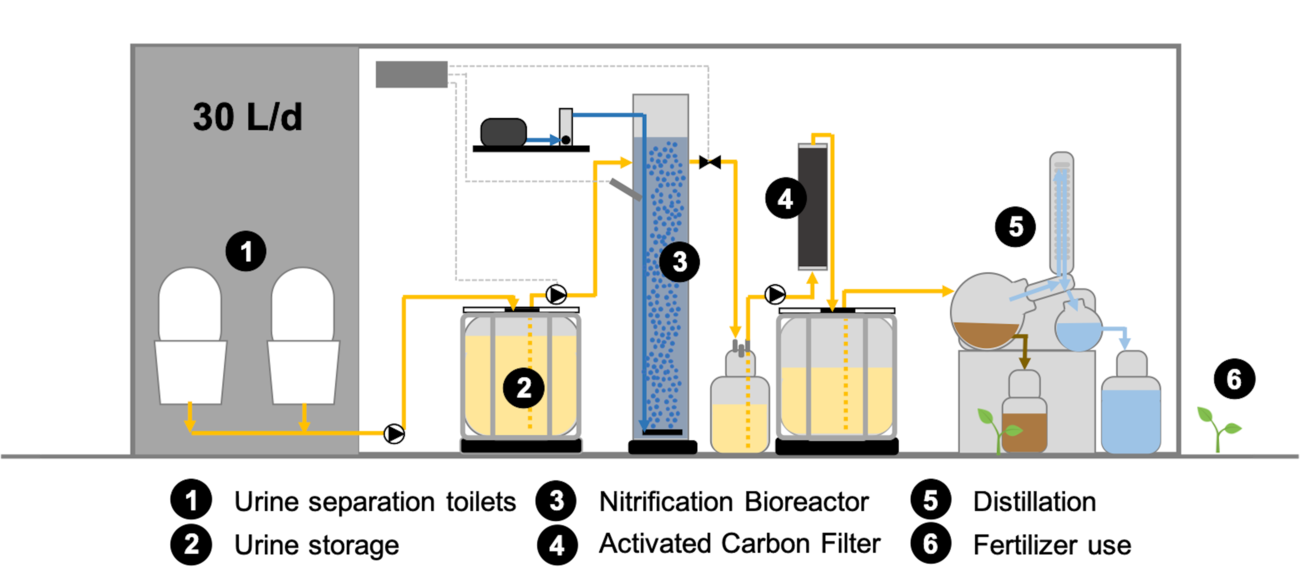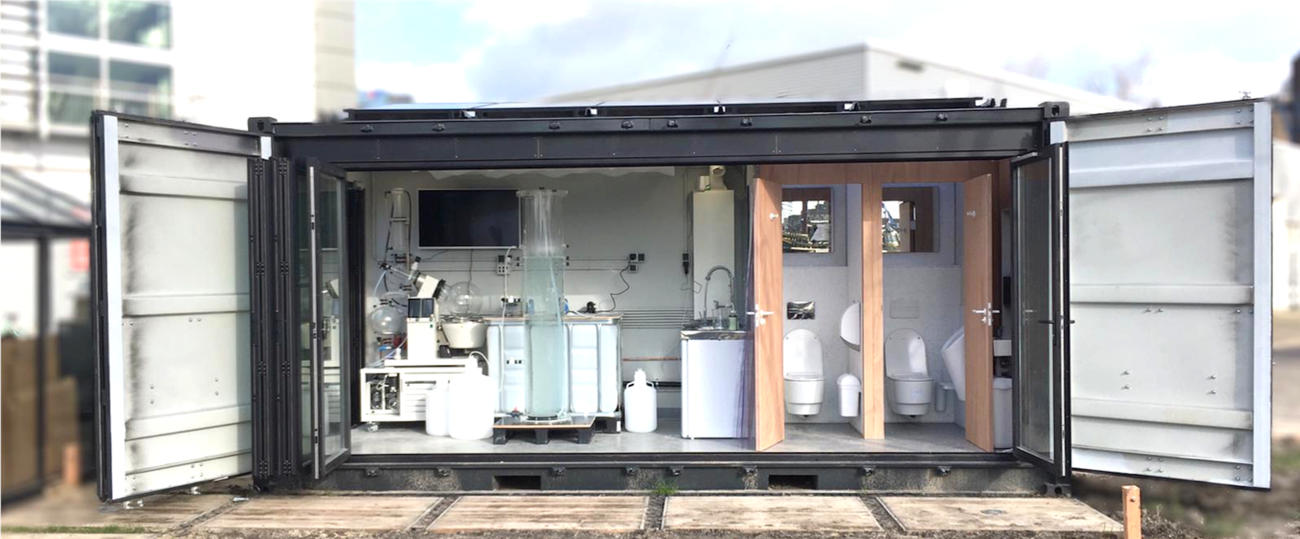Demo 1: Phosphorous extraction as a step in a cascading recycling of sewage sludge as SRM
Phosphorous extraction
Phosphorous (P) is one of 27 critical raw materials (CRM) in Europe for which supply
security is at risk and economic importance is high. Therefore, its recovery is critical and may
create circular business opportunities also in the context of utilising waste streams generated
by municipal services, such as wastewater treatment, for SRM-based construction products.
The main principle of the circular economy is to maintain resources at the highest possible
value in material flows for as long as possible. CINDERELA will demonstrate how this
principle can be applied with the example of Pextraction from wastewater before it ends up in
sewage sludge – a waste stream of use for manufacturing SRM-based construction products
such as geotechnical composites.
Phosphorus together with other nutrients important for agriculture is recovered directly from
source-separated urine in the form of a liquid fertilizer.
The complete nutrient recovery (CNR) system consists of stabilization, purification and concentration of the urine. A CNR approach has a number of important advantages when compared to other P recovery approaches like struvite precipitation:
- nitrogen and valuable secondary nutrients (boron, iron, nickel, …) are recovered along with the phosphate;
- the full waste is treated, with full removal of micropollutants, pathogens, and bad odour from urine;
- a liquid high-grade organic fertilizer is produced, which can be directly used for hydroponics/urban farming, and distilled water is obtained as a valuable by-product.


With the source-separation of urine approach, P that would otherwise end up is the sewage sludge, is recovered upstream of the wastewater treatment plant. The P-depleted sludge can then be recycled into an SRM-based construction product, generating value as input material. The modular and mobile unit for extraction of nutrients from urine has been tested in Amsterdam (The Netherlands) and will be trasnsported to Maribor (Slovenia) during a ten-day culture festival 'Lent' in Slovenian Maribor in 2021.
Two special urine separating toilets of the Swiss quality brand Laufen, are part of a container- sized laboratory. The gender-neutral toilets have been developed in such a way that the urine is separated as much as possible from the flushing water, so that it is diluted as little as possible. The urine is collected in a storage vessel and then passed through a 150 liter bioreactor. In this nitrification column, aerobic bacteria ensure that the ammonia from the urine is converted into nitrate. With the stabilization of these nitrogen components, the unpleasant odor also disappears. After the odorless liquid is pumped through an activated carbon filter to remove the last impurities, in the final step the liquid is concentrated in a rotary evaporator. Valuable nutrients are extracted from the urine, in particular phosphorus in the form of phosphate and nitrogen in the form of nitrate, but also other micronutrients, such as potassium and traces of calcium, magnesium and zinc, among others.
Visitors can clearly see what is happening in the laboratory.

The pilot aims to process 30 liters of urine per day. With an estimated yield of 200 to 300 mg of phosphorus per liter of urine, you end up with almost 10 grams of phosphorus per day. With such quantities, you can fertilize on a small scale, especially because the ratio between the different minerals (N-P-K) corresponds fairly well with what is in fertilizer products. Phosphorus is finite, and is now mainly mined, and as such is not renewable. In addition, the extraction process costs a lot of energy and there is a lot of contamination with heavy metals. But we can also compete for other minerals, such as nitrogen. With our process we extract such substances at the beginning of the life cycle and thus avoid that they only have to be removed from the waste streams a little further down in wastewater treatment plants and partly disappear into the environment.



 Copyright © 2026 Cinderela.
Copyright © 2026 Cinderela.